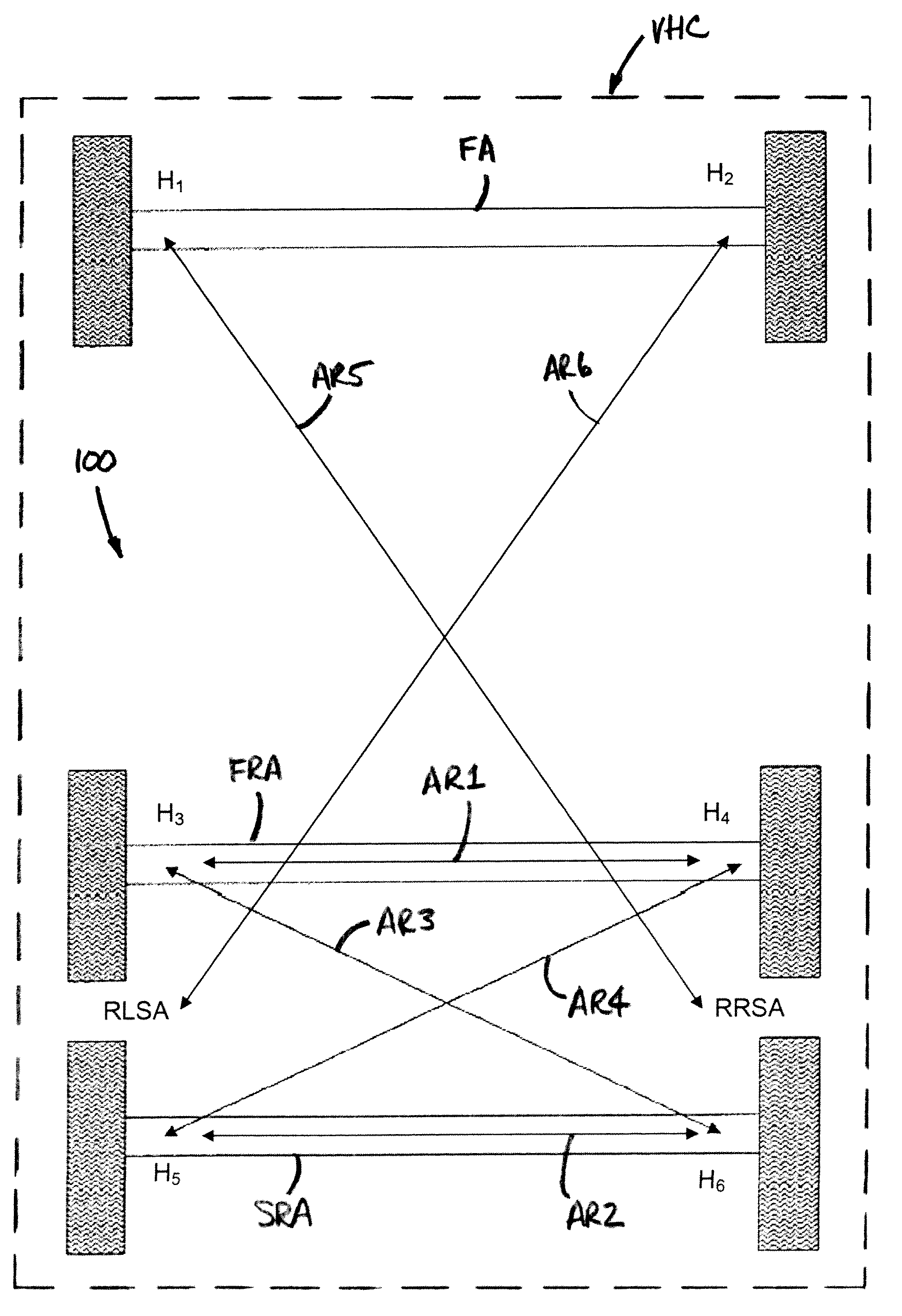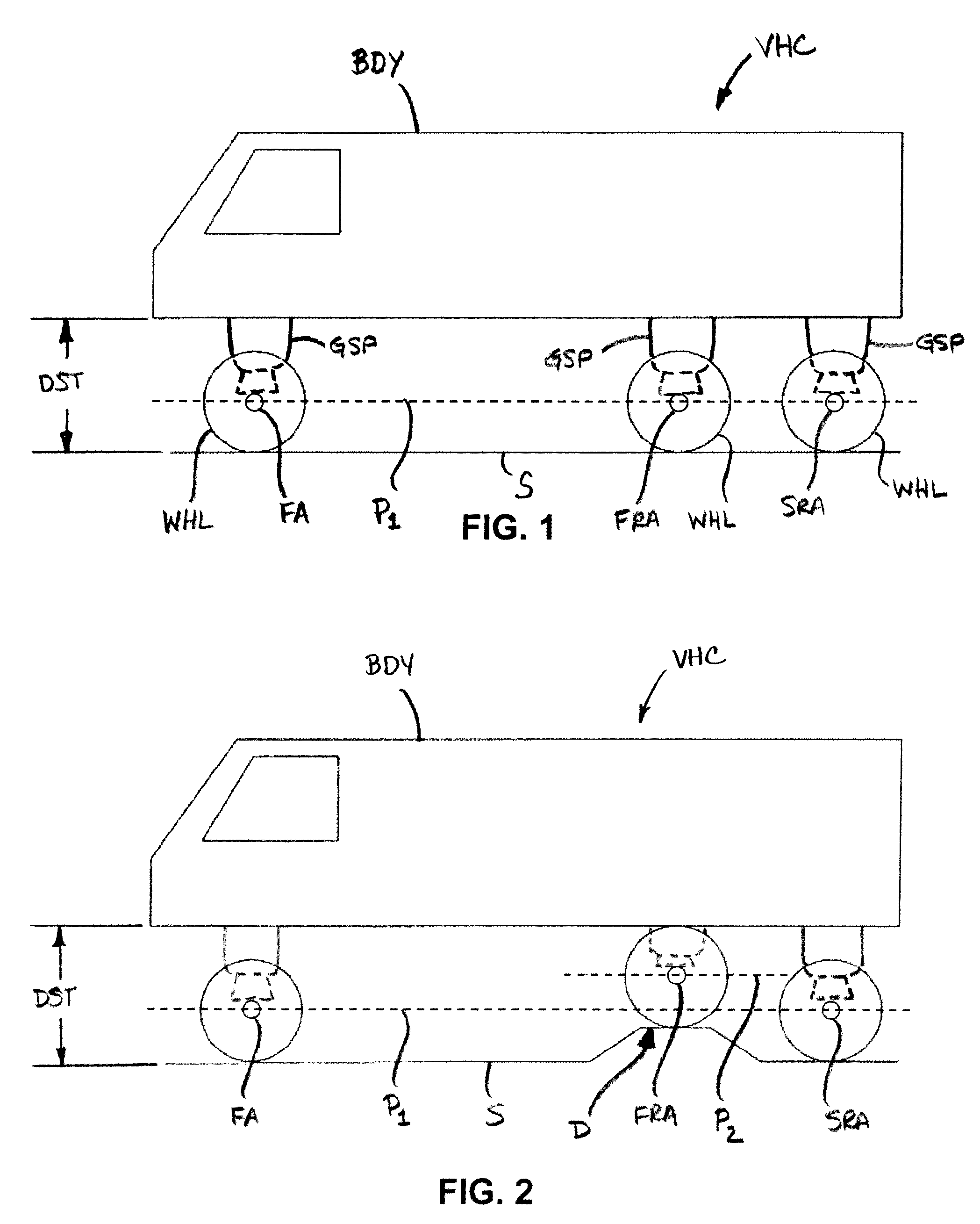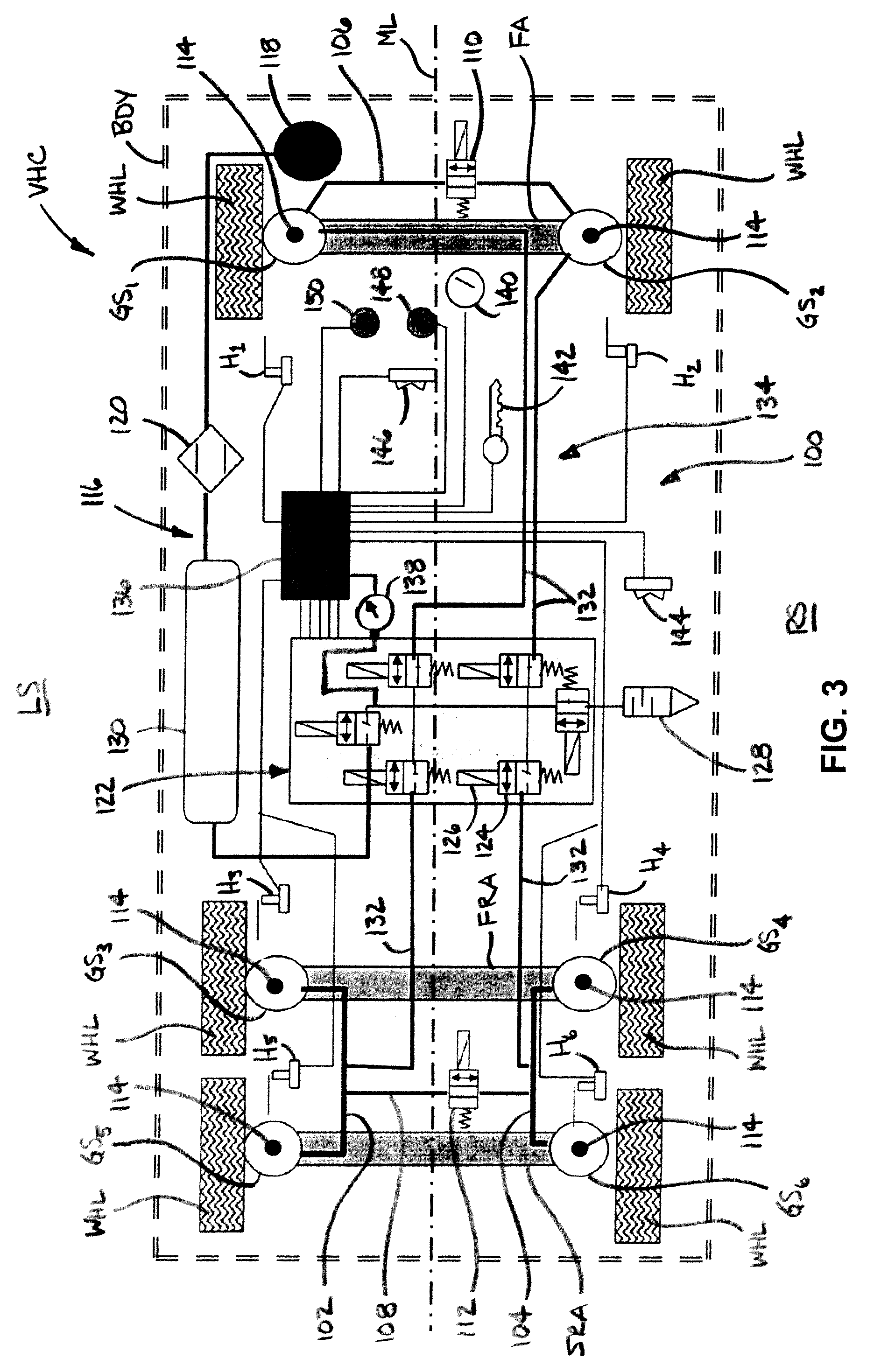Vehicle suspension system and method of operating same
a suspension system and vehicle technology, applied in the field of vehicle suspension systems, can solve the problems of introducing certain problems and/or disadvantages, prior art suspension systems are known to undertake height adjustment and/or leveling activities, and it is undesirable to undertake a height adjustment or leveling action under such a condition
- Summary
- Abstract
- Description
- Claims
- Application Information
AI Technical Summary
Benefits of technology
Problems solved by technology
Method used
Image
Examples
Embodiment Construction
[0027]Turning now to FIGS. 3-9, wherein the showings are for the purpose of illustrating exemplary embodiments of the present novel concept and not for the purpose of limiting the same, FIG. 3 illustrates an embodiment of a suspension system 100 disposed in operative association between a sprung mass, such as an associated vehicle body BDY, for example, and an unsprung mass, such as an associated wheel WHL, an associated front axle FA, an associated first rear axle FRA and an associated second rear axle SRA, for example, of an associated vehicle VHC. For the sake of clarity, suspension system 100 will be described herein with reference to a longitudinally-extending midline ML that generally defines a transition between a left side LS and a right side RS of the associated vehicle.
[0028]With continued reference to FIG. 3, suspension system 100 includes a plurality of gas spring assemblies GS1-GS6 with a different one of the plurality of gas spring assemblies disposed along a respectiv...
PUM
 Login to View More
Login to View More Abstract
Description
Claims
Application Information
 Login to View More
Login to View More - R&D
- Intellectual Property
- Life Sciences
- Materials
- Tech Scout
- Unparalleled Data Quality
- Higher Quality Content
- 60% Fewer Hallucinations
Browse by: Latest US Patents, China's latest patents, Technical Efficacy Thesaurus, Application Domain, Technology Topic, Popular Technical Reports.
© 2025 PatSnap. All rights reserved.Legal|Privacy policy|Modern Slavery Act Transparency Statement|Sitemap|About US| Contact US: help@patsnap.com



